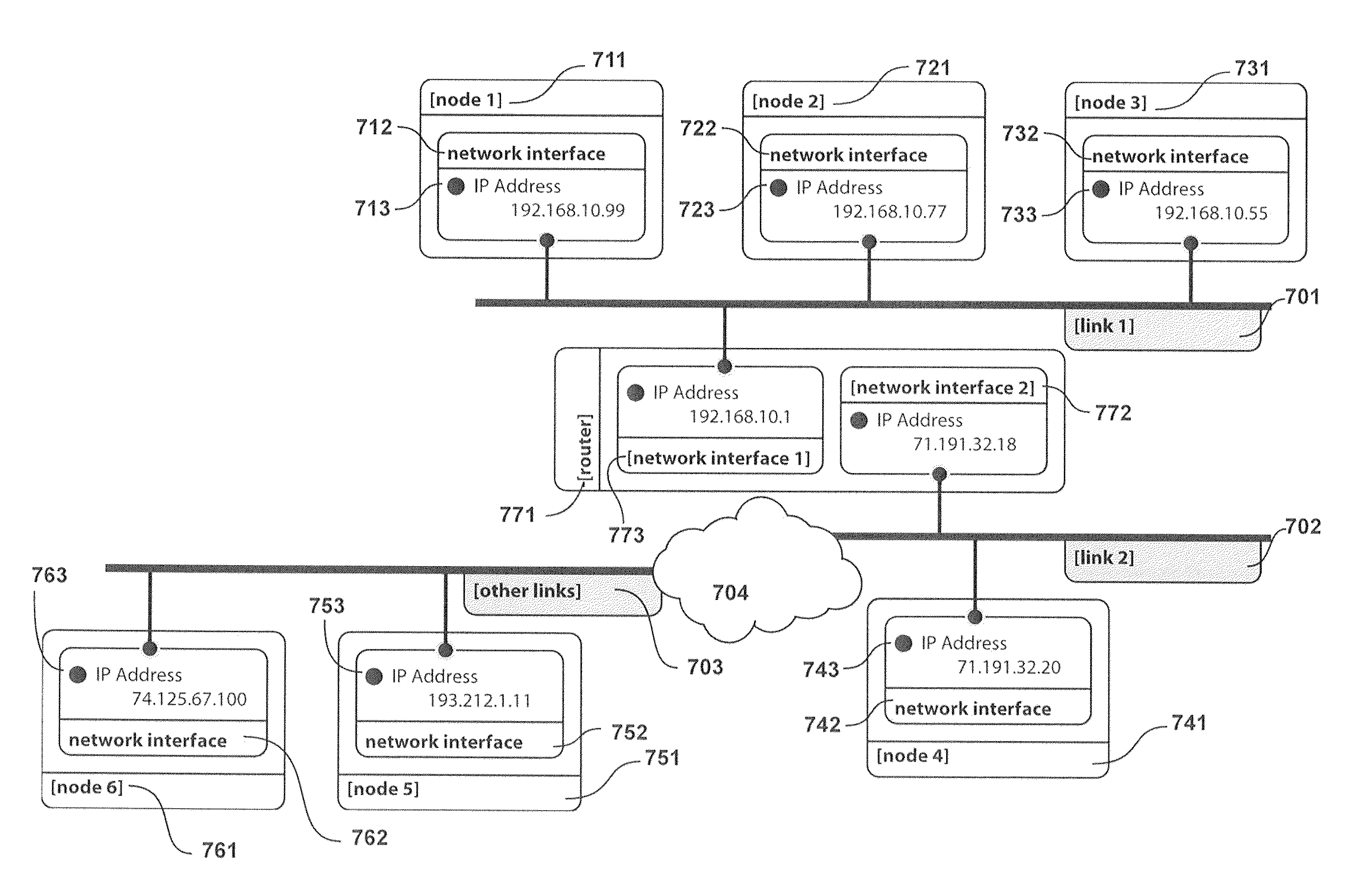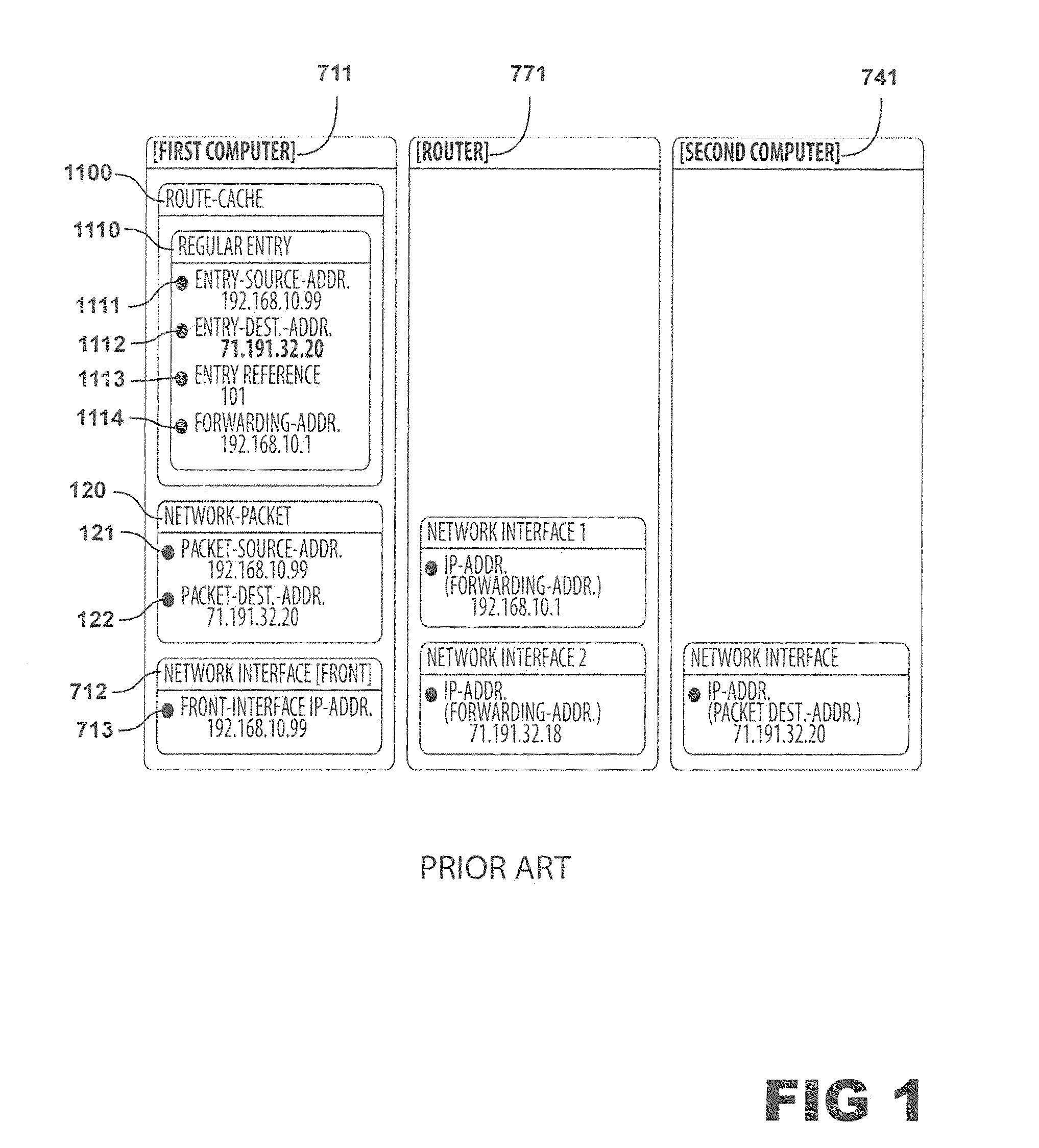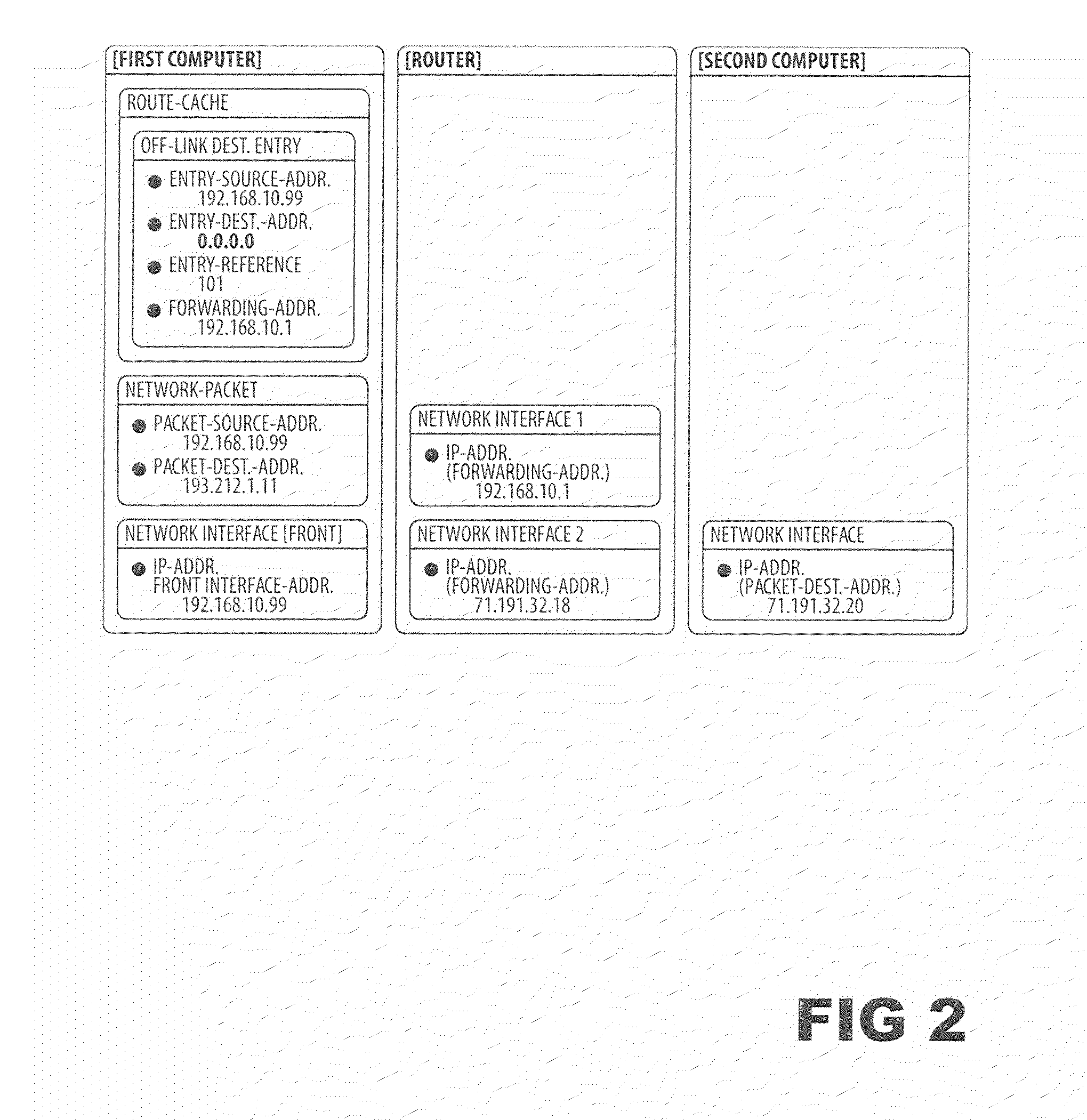Method for Optimizing a Route Cache
a cache and route technology, applied in the field of route cache optimization, can solve the problems of significant performance drop and filling of the route cache in the victim, and achieve the effect of preventing the flooding of the route cach
- Summary
- Abstract
- Description
- Claims
- Application Information
AI Technical Summary
Benefits of technology
Problems solved by technology
Method used
Image
Examples
Embodiment Construction
[0024]Embodiments of the present invention relate to a method for managing a route-cache on a server (711) or router (771) which prevents the route-cache (110) from being flooded with entries when a large number of network packets are sent to the server from a large number of off-link network nodes with different IP addresses.
[0025]In one embodiment of the invention, a server (711) is connected to an Ethernet link (701) with at least one physical network interface (712). This Ethernet link may be connected to a number of nodes, including other computers and routers (771) such that the server can communicate with these directly over Ethernet without the help of a router. These nodes are known as neighbors of the server or on-link nodes. Other nodes are referred to as off-link nodes. From the perspective of node 1 (711) in FIG. 7, node 2 (721), node 3 (731) and the router (771) accessed via network interface 1 (773) are on-link nodes since they can be accessed directly over the Ethern...
PUM
 Login to View More
Login to View More Abstract
Description
Claims
Application Information
 Login to View More
Login to View More - R&D
- Intellectual Property
- Life Sciences
- Materials
- Tech Scout
- Unparalleled Data Quality
- Higher Quality Content
- 60% Fewer Hallucinations
Browse by: Latest US Patents, China's latest patents, Technical Efficacy Thesaurus, Application Domain, Technology Topic, Popular Technical Reports.
© 2025 PatSnap. All rights reserved.Legal|Privacy policy|Modern Slavery Act Transparency Statement|Sitemap|About US| Contact US: help@patsnap.com



